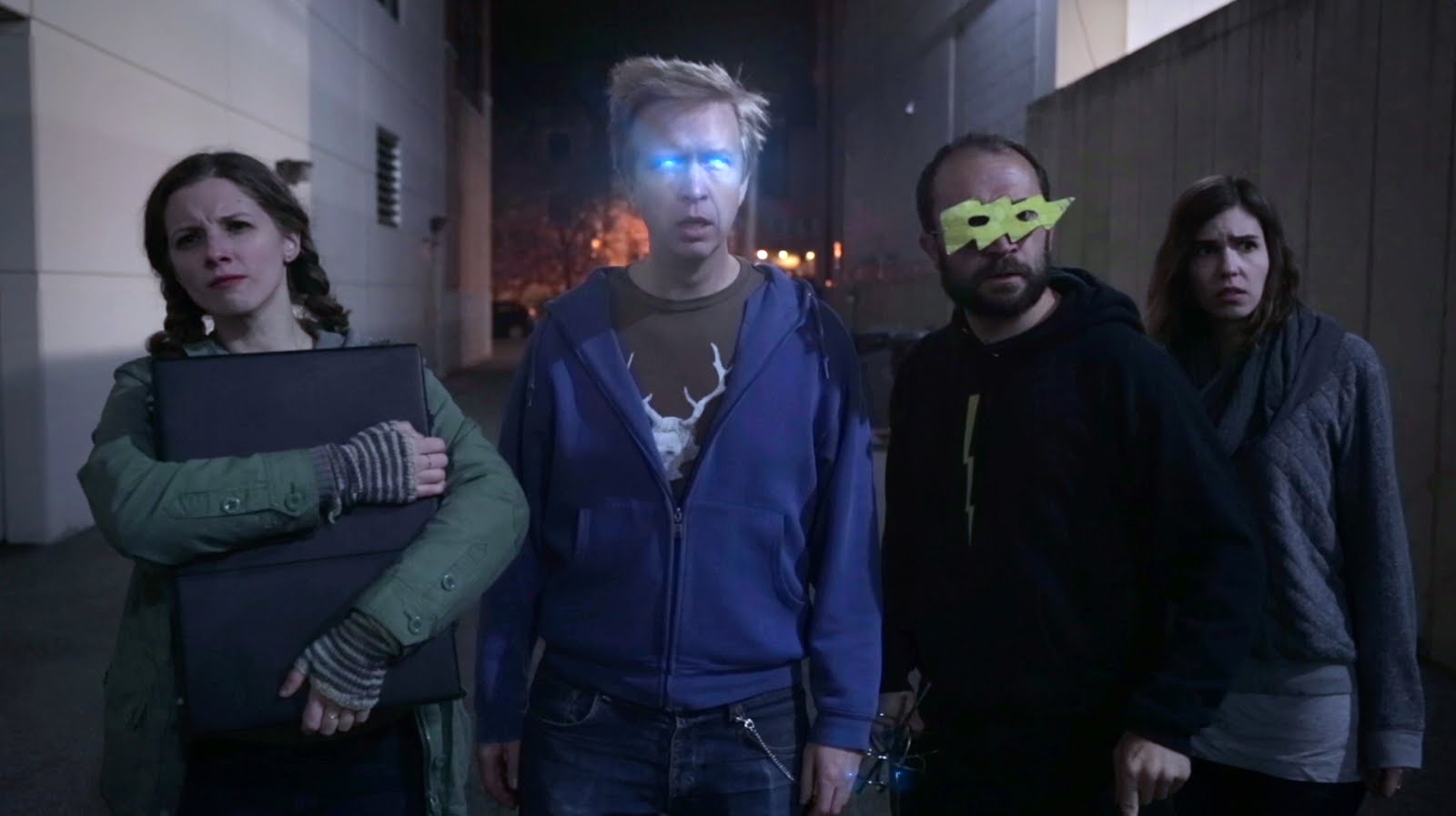In 2009, Jake Jarvi and friends embarked on a web series project that has finally come to conclusion: Platoon of Power Squadron. Called POPS for short, the series follows a simple premise of “young people with superpowers” and goes from there. It evolves from a slice of life comedy into a time-bending sci-fi action drama (but never not a comedy). With the series having reached its conclusion, it’s time to take a look at Platoon of Power Squadron.
POPS follows four roommates who go through their quarter-life crisis with the added stress of possessing superhuman powers.Time-stopping Virginia just wants to live a normal life. Matter-manipulating Jonas feels the same, but has a harder time resisting the urge as a comic book fan. The electric Donald wants to be a superhero, but can’t seem to find any crime to fight. Multiplying Sebastian just wants to have a fight night. Each character has their own storyline over the ten episode series, and the various stories interconnect throughout.
The main saga is Donald’s rise as a superhero. From the beginning, he has no grasp on his powers and no real grasp on what it means to be a hero. Instead, Donald is just seeking the thrills of shooting lightning at bad people. Donald spends most of the series enabling Jonas and Virginia, the two who don’t want to use their powers at all, to aid him in his own origin story. First, he has Virgina use her time-bending powers to fight crimes that have already happened. When she backs out of the arrangement, he has Jonas act as his mentor figure. It’s in these middle episodes where we see Jonas’s lack of control and rising body count. While the others are good for a few party tricks, Jonas can incinerate people without even thinking about it.
The other major character arc follows Sebastian and her rogue duplicate. Unlike most duplicating superheroes whose doppelgangers cease to exist after returning to the original, Sebastian’s each retain their own memories and feelings. While her first copies are simply identified as “Two” and “Three,” the fourth chooses to identify as an individual with her own personality. At first, Sebastian is unable to absorb Four’s memories as she goes out about her own life. Eventually, it escalates when Four is able to resist being pulled back in and separates from Sebastian and starts calling herself Bella Solo. She declares “I’m not the fourth you, I’m the first me,” when she leaves Sebastian forever.
The first episodes seem simpler, like a bunch of friends goofing off. Shot on a crappy camcorder in a tiny apartment, the first episode especially lacks a lot of quality. This works as the production value, especially the visual effects, get better and better with each episode. It does at least appear that Jarvi, who also stars as Jonas, did have the major character arcs planned out from the beginning. Sebastian’s troubles with Four are subtle mentions in the first few episodes and Virginia’s further understanding of her time travel abilities introduce what is to become the primary antagonist of the series.
Releasing just ten episodes over the course of 8 years may seem strange, but these are no ordinary webisodes. Each episode is “full length,” ranging to about an hour each with complex stunts and visual effects. They’re also broken into segments so it really feels like a full season is released at a time, with a few episode’s segments released daily instead of all at once. Jarvi's weekly updates certainly helped fill in the void over the years. The beauty of it being all released now is that we are no longer waiting for up to two years in between episodes. You can watch the whole thing in just one day. It’s also fun to watch cast age and get in shape between episodes. The whole series takes place over the course of a few months, with the last few all taking place on one night. “I’m almost thirty,” Jonas says in the finale. Yeah, okay dude, and I’m seventeen.
Watch every episode of Platoon of Power Squadron here. And thanks to Jake Jarvi for sending over the images used for this review.




